- Home
- >
- Software Development
- >
- RFI stands for what? How to write software RFI
The RFI is the beginning point for your software development project. It is widely used to initiate projects between two partners to give the outsourced service vendor the clients’ requirements and objectives. This article will provide all about RFI: RFI stands for what, the importance of an RFI, RFI template, and how to write an RFI.
The information in this post will teach you how to build an RFI for software development that will elicit prompt and meaningful responses from potential vendors.
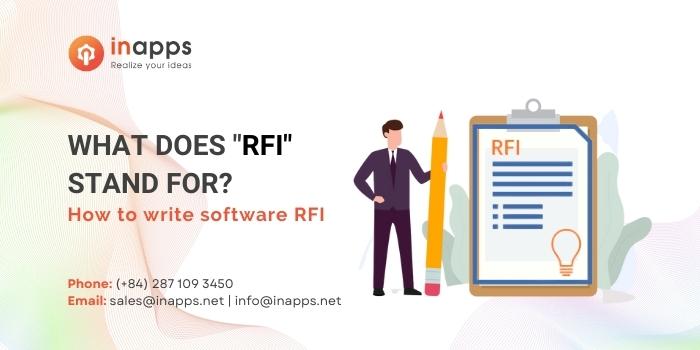
RFI stands for
RFI stands for…
So what is an RFI?
First of all, RFI is an abbreviation for Request for Information. An RFI is a document sent to possible suppliers by businesses and products and services to obtain information about their skills, size, experience, and price. RFIs are highly beneficial for companies that want or need to explore many possible partners.
In most circumstances, the RFI assists you in determining the qualities of the supplier with whom you are contemplating cooperating. This establishes a sham screening procedure for narrowing down a vast population to a small number of viable enterprises.
Companies will utilize the useful preliminary information to choose which provider is best for them. RFI facilitates comparisons between firms by filtering out those that do not meet your requirements and encouraging competition, among others.
In some instances, discerning consumers want to know what the service provider is doing in a specific real-life situation. Instead of merely obtaining work item summary tables, you want to see how a supplier can solve an issue or meet a requirement. This is also highly advantageous since clients may determine whether the working style and strategy are fair or not.
However, no corporation will agree to comply with this customer request because a detailed action script takes a lot of effort and may show you precisely what they will do. In part, the service provider company may be unwilling to reveal highly trustworthy internal working principles because it believes such requests are sometimes “trickle testing” by competitors. Or simply because they are too busy to complete for a customer who is unwilling to enter into a formal cooperation contract.
Read more RFI definitions on Wikipedia.
Who should use the RFI?
The RFI template is used by the project or procurement manager to begin the process of seeking bids for products, materials, and services, depending on how your business is structured. After that, the RFI template is distributed to suppliers and vendors.
These suppliers and vendors will complete the RFI and deliver it to the project leader in charge of procurement.
The RFI should include the following information:
- The information request should be concise and easy to compare.
- Make it straightforward for suppliers and vendors to respond
- Don’t go too particular – keep it broad.
- Don’t take too much time from the vendor or supplier.
RFI vs. RFP vs. RFQ: What is the difference?
We’ve gone through the RFI definition, but you may still be perplexed because of many similar phrases and acronyms. But don’t worry, we’ve got your back.
RFI, RFP, and RFQ are frequently used interchangeably, although this is incorrect. All of these concepts have significance and a reason for existence.
Let’s delve a little more into these.
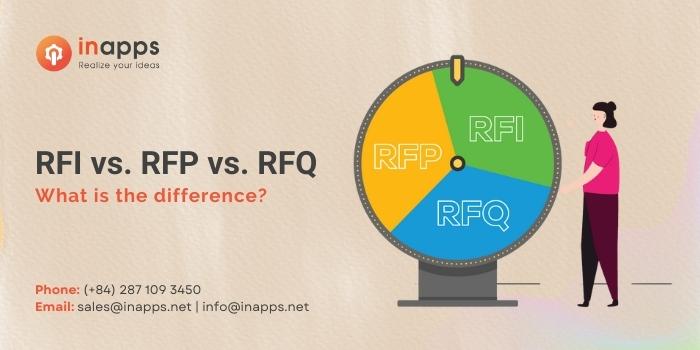
How to write software
When a purchasing organization issues a Request for Information (RFI), they are looking for broad information about prospective suppliers’ capabilities and services/goods. The following stage of the procurement process includes either a Request for Quotation (RFQ) or a Request for Proposal (RFP).
What is RFP (Request for proposal)?
In most cases, an RFI comes before a request for proposal (RFP). An RFP is a document where you invite several suppliers to submit solutions to your problems and seek pricing information for their product or service.
This is a more comprehensive request in which you should specify both the starting place and what is intended to be accomplished, not just in terms of money but also quality, safety, execution, etc.
- An RFP should include, without getting into too much detail:
- If necessary, a confidentiality agreement.
- Details about your company.
- The recruiting process’s goals (i.e., needs expecting to be covered).
- In as much detail as feasible, describe the existing condition and the required improvements.
- Information on the project’s execution.
- The process’s phases are listed on a calendar (presentation of the proposal, decision-making, start of the project, etc.)
Although RFPs are often issued after RFIs, they can be combined in some instances. This combination frequently arises in government entities as a result of bids. By doing it this manner, all necessary information is gathered to make the initial choice.
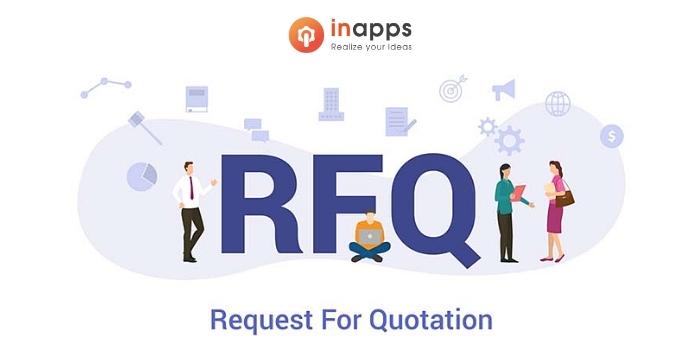
What is RFQ (Request for quotation) or budget request?
The purpose of an RFQ, or request for quotation, is to inquire about the cost of a given service or product from various vendors. It’s utilized when you’ve decided to buy and are primarily concerned about pricing.
In this situation, you request a budget from the supplier for a particular product or service, making it simple to compare estimates because they are budgeting for the same item.
The following information must be included in an RFQ:
- Details about your firm (business activity and contact details).
- Specific pricing request for a product or service given by the supplier, fully describing what this product or service should entail.
- If required, request that you sign a confidentiality agreement.
- Deadlines for submitting the budget and the project’s following phases.
- Criteria that will be considered while making a decision.
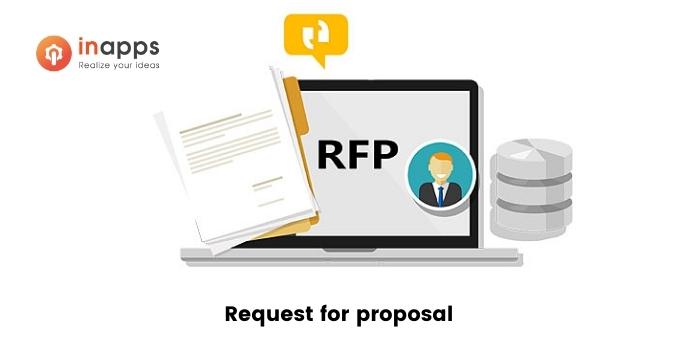
How to write an RFI to Software Development
There are several ways to write an RFI. Each organization chooses the specific information it requires from multiple vendors. The quantity of info it seeks is also specified.
It does not, however, mean that each RFI is so different. Several specific things are included in your request for information form:
- Basic company information (general information about your company, such as business activity, headquarters, target customer, contact details…).
- Request that the provider offers essential details about their company’s confidentiality agreement to prevent suppliers from revealing third-party data.
- Because it is a professional document that may be transmitted offshore to your partners, keep in mind that the reader should not speak complex or easily misunderstood reading language.
Keep it as concise as possible, use neutral language, and refrain from asking unrelated questions to the project/product.
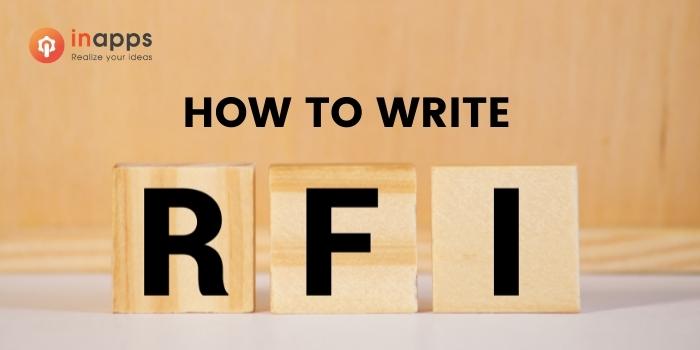
How to write an RFI
Synopsis
Your company’s origins, goals, objectives, and confidentiality policies should be stated. At the end of this section, the supplier has a general idea of the requester and what they want.
Credentials
Naturally, credentials are preliminary evidence that a provider has high-quality components. The skills and credentials required for your project may be listed here. Write down all of your worries or requirements, such as team size, technical limits, operating systems, amount of expertise, and so on.
Confidentiality information
Maintaining classified information is highly delicate and needs the utmost care. No company wants to put their trust in the wrong person only to suffer severe consequences due to knowledge gaps, such as outsourcing software development.
Every firm has its ideas or measures to protect itself from competitors. And an NDA (Non-Disclosure Agreement) is a legal instrument that specifically states this. The NDA is a legally enforceable contract that must be signed to secure a confidentiality agreement. Describe your intellectual property and proprietary privacy procedures. You can include them at the beginning of the RFI form if they are critical to future collaboration.
Summary of the project’s goals and objectives
The stuff you require should be listed alongside the products you want. The objective of the inquiry may be to determine which remote development business would be the most appropriate and cost-effective in resolving your issues. At this point, you should state your objective as clearly as possible.
If you want potential vendors to understand your goals, you must provide as much information as possible. Certain factors must be evident from the start, such as the project’s map, software requirements, and the need to engage a complete team of functions or help a few individuals.
Requested information
How can you ensure that the vendor you want will meet your requirements? In reality, referral information from previous partners may help you understand the operation and your ability to perform the task.
To evaluate the vendor’s viability, compile a list of detailed questions regarding its infrastructure, work practices, project management methodology, quality control tools, and software development approaches…
Expectations of response
At this point, you can use the assessment criteria to set your expectations. This part should also provide information and a timetable.
After gathering basic information, you might consider adopting the correct selection methods for severe deployment needs, such as RFQ (Request for Quotation) or RFP (Request for Proposal), to make request management more flexible.
Contact point
Last but not least, the point of contact between you and your service provider. I underlined this as a critical component since the person acting as a “bridge” will make up any issue, problem, inquiries, or requests to relay your recommendations to the team.
Make sure they are in a reasonable mind to listen and discern. After the introductory section, please put contact information and a representative’s contact information after thee interactions with suppliers.
Standard RFI template
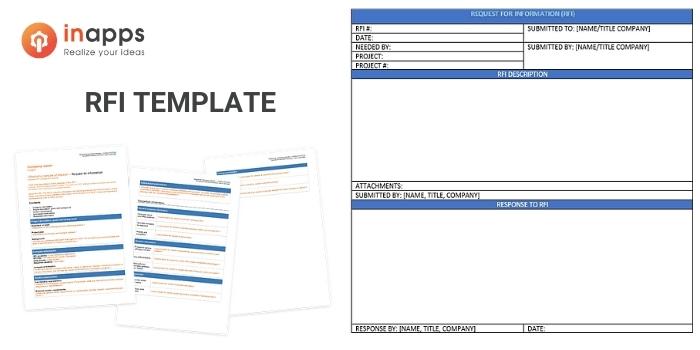
Software RFI template
This RFI template is suitable for almost every situation. Whether you need information on technology and consultants or you need assistance with a specific project, you may use this paper to explain your requirements to possible suppliers.
It is divided into the six sections listed below:
- Needs assessment — aims and objectives
- Background – information about your company
- Qualifications – the talents and qualifications you want
- Requested information – what you wish to learn
- Evaluation criteria for expert selection
- Response time — the deadline
Wrapping Up
Now you clearly understand about RFI stands for what.
A reasonable RFI will yield replies and the essential information to make the supplier viable, building a portfolio of high-value vendors for future purchasing strategies. It’s a quick and easy approach to compare providers if you need to contract a small job quickly.
Choosing a remote development team is a detailed procedure that involves much study and evaluation. However, by adopting our RFI approach, you’ll get a complete picture that will help you choose the correct firm.
Since 2016, more than 100 clients from the US, UK, Europe, Singapore, and Australia trusted us with developing their web and mobile projects.
If you’re interested in forming a remote development team, InApps gladly fulfill your RFI, mainly if it follows our framework. Fill in the contact form below and share your needs.
List of Keywords users find our article on Google:
Let’s create the next big thing together!
Coming together is a beginning. Keeping together is progress. Working together is success.


















